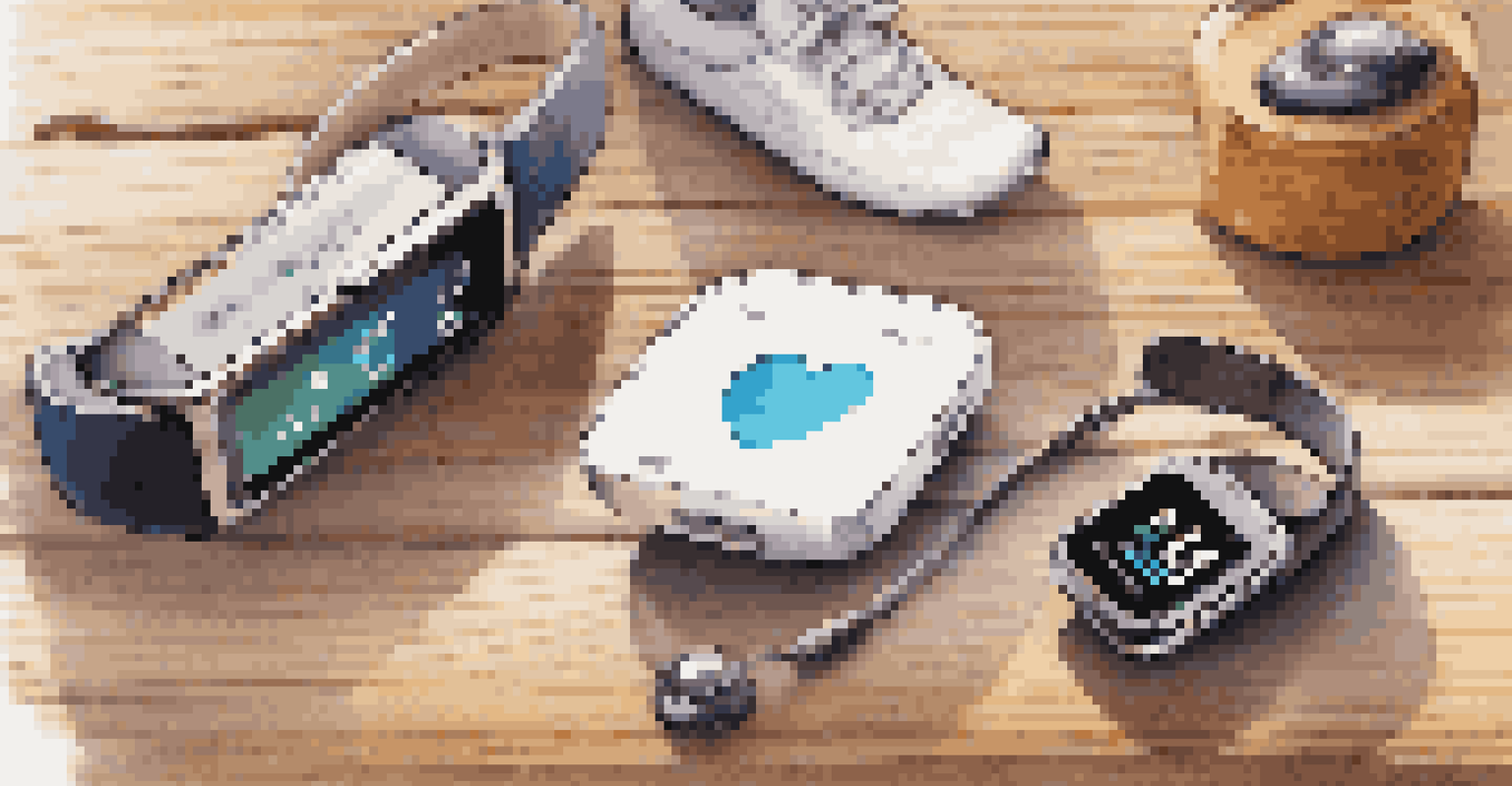The Impact of Health Technology on Patient Satisfaction Levels

Understanding Health Technology in Healthcare
Health technology encompasses a broad range of tools and systems designed to improve patient care. This includes electronic health records (EHRs), telemedicine, and wearable devices. Each of these tools plays a role in streamlining healthcare delivery and enhancing communication between patients and providers.
The greatest wealth is health.
For instance, EHRs allow healthcare providers to access patient histories quickly, leading to more informed decisions. Similarly, telemedicine enables patients to consult with doctors from the comfort of their homes, breaking down geographical barriers. These innovations not only improve efficiency but also enhance the overall patient experience.
As healthcare continues to evolve, the integration of technology becomes crucial. Patients today expect their healthcare interactions to be as seamless and straightforward as their everyday digital experiences. Understanding this shift helps providers adapt and meet these rising expectations.
Enhanced Communication Through Technology
One of the most significant impacts of health technology is improved communication between patients and healthcare providers. Platforms like patient portals allow for secure messaging, appointment scheduling, and access to medical records. This transparency empowers patients to take an active role in their healthcare.

Imagine being able to message your doctor with a quick question and receive a prompt response, rather than waiting for an appointment. This level of accessibility can significantly reduce patient anxiety and increase satisfaction. Furthermore, patients who feel heard are more likely to trust their providers and adhere to treatment plans.
Tech Enhances Patient Communication
Health technology, such as patient portals, improves communication between patients and providers, fostering stronger relationships and increased satisfaction.
Ultimately, enhanced communication fosters a stronger patient-provider relationship. When patients feel they can easily reach out and engage with their healthcare team, it leads to a more positive overall experience, which in turn boosts satisfaction levels.
Telemedicine: Revolutionizing Access to Care
Telemedicine has emerged as a game changer in patient care, especially for those in remote areas or with mobility challenges. By providing virtual consultations, patients can receive medical advice without the need for travel. This accessibility is crucial for improving healthcare equity and patient satisfaction.
Technology is best when it brings people together.
Consider a parent with a sick child who can't make it to the clinic due to transportation issues. A telemedicine appointment allows them to consult a doctor from home, saving time and reducing stress. The convenience of receiving care in familiar surroundings can dramatically enhance the overall patient experience.
Moreover, telemedicine has proven effective for follow-up appointments and routine check-ups. This flexibility not only meets patient needs but also helps healthcare providers manage their time more efficiently, ultimately leading to higher satisfaction on both ends.
Wearable Technology: Empowering Patients
Wearable devices, such as fitness trackers and smartwatches, have become increasingly popular tools for monitoring health. These gadgets empower patients to take charge of their health by tracking vital signs, activity levels, and even sleep patterns. The data collected helps patients understand their health better and encourages proactive management.
Imagine a person who becomes more active after seeing their daily steps on a fitness tracker. This newfound awareness can motivate healthier choices, leading to improved health outcomes. When patients actively engage with their health data, they often report higher satisfaction levels.
Telemedicine Expands Access to Care
Telemedicine provides convenient virtual consultations, significantly improving access to healthcare for those in remote areas or with mobility challenges.
The integration of wearables into healthcare also allows providers to monitor patients remotely, providing timely interventions when necessary. This proactive approach enhances patient safety and satisfaction by ensuring that concerns are addressed before they escalate.
Improved Patient Education and Resources
Health technology has transformed the way patients access educational resources. Online platforms, mobile apps, and video tutorials provide valuable information about medical conditions, treatments, and wellness tips. This easy access to information helps patients make informed decisions about their health.
For example, a patient diagnosed with diabetes can find a wealth of resources online to understand their condition and learn about management strategies. This kind of education fosters empowerment and confidence, leading to greater satisfaction with their care. When patients feel equipped with knowledge, they are more likely to engage in their treatment plans.
Additionally, many healthcare providers are using technology to create personalized education plans tailored to individual patient needs. This level of customization not only enhances understanding but also strengthens the patient-provider relationship, ultimately increasing satisfaction.
Streamlined Processes for Better Experiences
Streamlining processes through health technology significantly enhances patient satisfaction. From online appointment booking to automated reminders, technology reduces the friction often associated with healthcare visits. This efficiency saves time and creates a more pleasant experience for patients.
Imagine walking into a clinic where your paperwork is already prepared because you completed it online. This streamlined approach minimizes wait times and allows healthcare providers to focus on patient care rather than administrative tasks. When patients experience less hassle, their overall satisfaction with the healthcare system increases.
Wearables Empower Health Management
Wearable devices enable patients to actively track their health, promoting proactive management and enhancing overall satisfaction with their care.
Moreover, technology helps track patient flow and optimize scheduling. This results in fewer overbooked appointments and shorter wait times, making for a smoother experience for everyone involved. A well-organized system contributes significantly to patient satisfaction.
Feedback Mechanisms: Listening to Patients
Health technology enables providers to gather valuable feedback from patients through surveys and reviews. This data is crucial for understanding patient needs and experiences, allowing healthcare facilities to make informed improvements. Actively listening to patient feedback demonstrates a commitment to quality care.
For instance, a hospital might implement a follow-up survey after a patient's visit to gauge satisfaction levels. Insights from these surveys can guide changes in service delivery, making the patient experience more responsive and tailored. When patients see that their feedback leads to positive changes, it boosts their satisfaction and trust in the healthcare system.

Furthermore, engaging patients in the improvement process fosters a stronger sense of community and collaboration. When patients feel their voices matter, they are more likely to feel valued and satisfied with their care.
The Future of Health Technology and Patient Satisfaction
As technology continues to evolve, so will its impact on patient satisfaction. Innovations like artificial intelligence, personalized medicine, and advanced data analytics hold great potential for enhancing the patient experience. These advancements will likely lead to even more tailored and efficient care.
For example, AI could help predict patient needs based on historical data, allowing providers to offer proactive care. As healthcare becomes increasingly personalized, patients will likely feel more understood and valued, leading to higher satisfaction levels. The integration of these technologies promises a future where patient experience is at the forefront of healthcare delivery.
Ultimately, the key to successful implementation lies in balancing technology with the human touch. While health technology offers incredible benefits, maintaining compassion and empathy in patient interactions remains essential for fostering satisfaction. The future looks bright for health technology and its role in enhancing patient satisfaction.